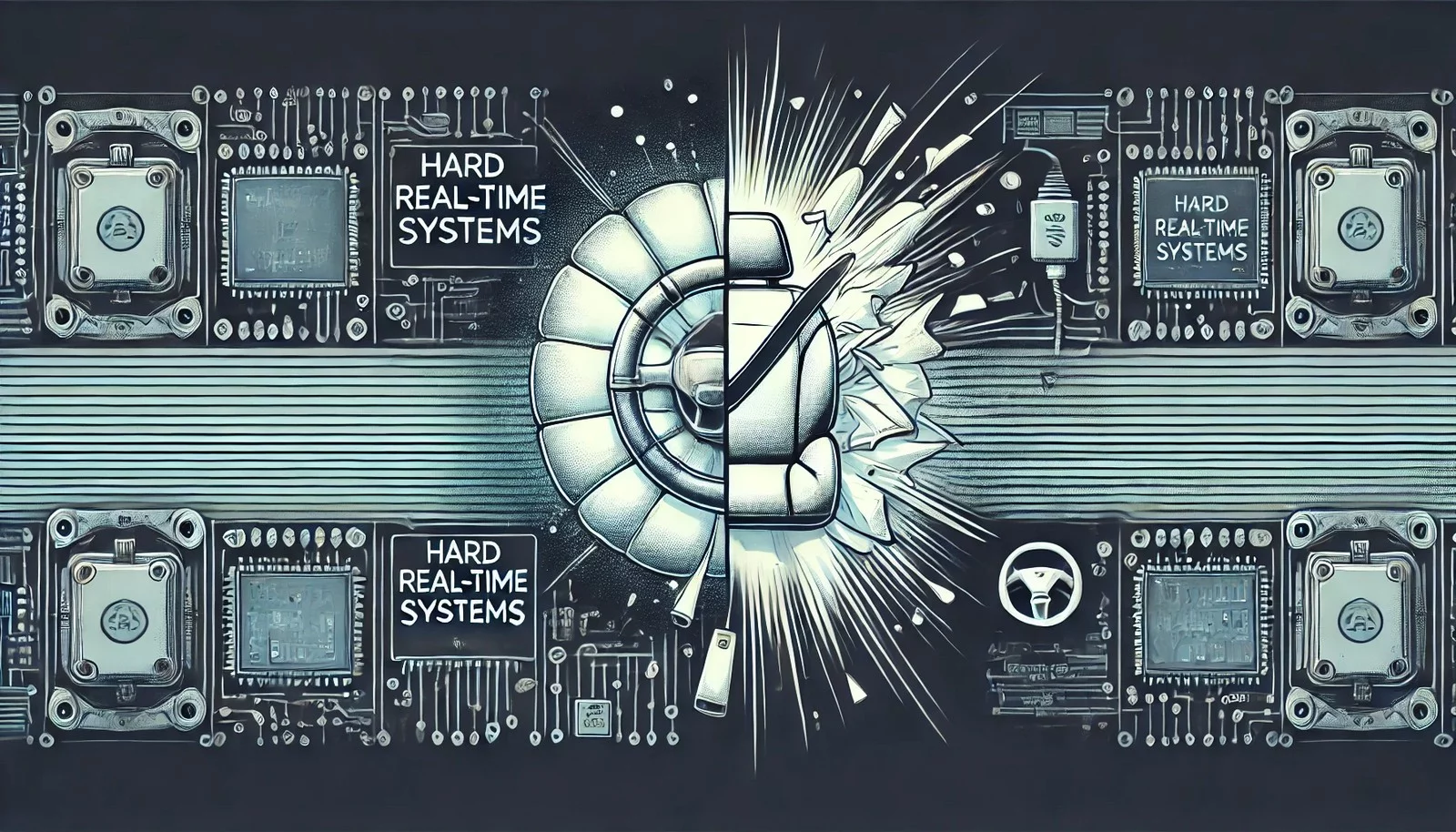Hard Real-Time Systems
 (Representational Image | Source: Dall-E)
(Representational Image | Source: Dall-E)
Quick Navigation:
- Hard Real-Time Systems Definition
- Hard Real-Time Systems Explained Easy
- Hard Real-Time Systems Origin
- Hard Real-Time Systems Etymology
- Hard Real-Time Systems Usage Trends
- Hard Real-Time Systems Usage
- Hard Real-Time Systems Examples in Context
- Hard Real-Time Systems FAQ
- Hard Real-Time Systems Related Words
Hard Real-Time Systems Definition
A hard real-time system is a computing system where tasks must be completed within strict time constraints, and failure to meet deadlines results in catastrophic consequences. These systems are commonly found in mission-critical environments such as avionics, industrial automation, medical devices, and automotive control systems. Unlike soft real-time systems, which tolerate occasional deadline misses, hard real-time systems require absolute adherence to timing constraints to ensure system reliability and safety.
Hard Real-Time Systems Explained Easy
Imagine you're playing a game where you have to press a button at the exact right moment to score points. If you miss, you lose immediately. Hard real-time systems work the same way—they must do tasks exactly on time, every time. If they fail, bad things can happen, like a car's brakes not working or a plane's navigation system failing.
Hard Real-Time Systems Origin
Hard real-time computing principles emerged with the advancement of embedded systems and automation in the mid-20th century. Early real-time systems were developed for military and aerospace applications, where precise timing was crucial for guidance and control. Over time, they expanded into industries like healthcare, automotive, and telecommunications.
Hard Real-Time Systems Etymology
The term “hard real-time” comes from the words:
- "Hard" meaning strict and uncompromising.
- "Real-time" referring to systems that process tasks within a guaranteed time frame.
Together, the phrase describes systems that must operate within absolute timing constraints.
Hard Real-Time Systems Usage Trends
Hard real-time systems are increasingly used in autonomous vehicles, medical equipment, and industrial robots. With the growth of automation, IoT, and AI-driven control systems, their role is expanding. Industries demand higher safety standards, making these systems more critical than ever.
Hard Real-Time Systems Usage
- Formal/Technical Tagging:
- Embedded Systems
- Mission-Critical Computing
- Deterministic Scheduling
- Safety-Critical Systems - Typical Collocations:
- "hard real-time scheduling"
- "guaranteed response time"
- "deterministic real-time execution"
- "failure-intolerant computing"
Hard Real-Time Systems Examples in Context
- Automotive: Airbag deployment systems must activate in milliseconds upon impact.
- Medical: Pacemakers must deliver electrical pulses precisely to maintain a heartbeat.
- Aerospace: Flight control systems in aircraft must respond instantly to pilot inputs.
- Industrial: Robotic arms on production lines must execute movements with precise timing.
Hard Real-Time Systems FAQ
- What is a hard real-time system?
A hard real-time system is a computing system where missing a deadline leads to complete system failure or catastrophic consequences. - How do hard real-time systems differ from soft real-time systems?
In hard real-time systems, missing a deadline is unacceptable, whereas soft real-time systems can tolerate occasional delays. - What are some examples of hard real-time systems?
Examples include flight control systems, anti-lock braking systems, and medical monitoring devices. - How do hard real-time systems ensure deadlines are met?
They use deterministic scheduling algorithms like Rate-Monotonic Scheduling (RMS) and Earliest Deadline First (EDF). - Why are hard real-time systems important in safety-critical applications?
Because missing a deadline in these systems can lead to life-threatening failures. - What programming languages are used in hard real-time systems?
Languages like C, Ada, and assembly are commonly used due to their efficiency and low-level hardware access. - How does hardware affect hard real-time systems?
Specialized hardware like real-time processors and dedicated interrupt controllers help ensure strict timing requirements are met. - What industries rely on hard real-time systems?
Industries like aerospace, healthcare, automotive, and manufacturing depend on them. - What are the challenges in designing hard real-time systems?
Challenges include ensuring predictability, optimizing resource usage, and handling system failures. - Can AI be used in hard real-time systems?
AI is being explored for real-time decision-making, but its use in hard real-time systems is limited due to unpredictable processing times.
Hard Real-Time Systems Related Words
- Categories/Topics:
- Embedded Systems
- Real-Time Computing
- Deterministic Scheduling
- Mission-Critical Systems
Did you know?
NASA’s Mars rovers use hard real-time systems to control their landing sequence, ensuring that parachutes and thrusters activate at precisely the right moments. A delay of even a fraction of a second could lead to mission failure!
Authors | Arjun Vishnu | @ArjunAndVishnu

PicDictionary.com is an online dictionary in pictures. If you have questions or suggestions, please reach out to us on WhatsApp or Twitter.
I am Vishnu. I like AI, Linux, Single Board Computers, and Cloud Computing. I create the web & video content, and I also write for popular websites.
My younger brother, Arjun handles image & video editing. Together, we run a YouTube Channel that's focused on reviewing gadgets and explaining technology.
















Comments (0)
Comments powered by CComment